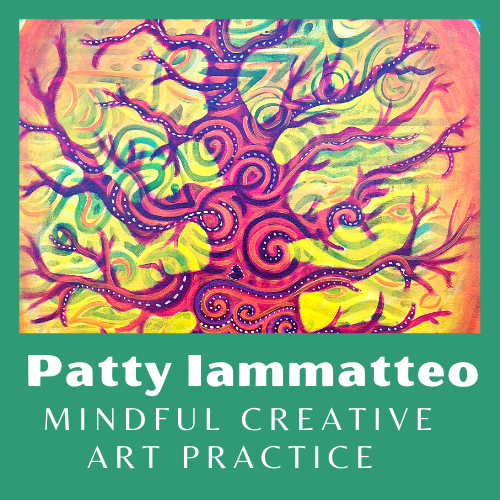PAINTING RESOURCES/VIDEOS
Suggested Materials for Intentional Creativity Processes and Paintings
Acrylic Paint
The preferred choice is Golden brand in fluid acrylics in squeeze bottles. It is high quality, but is also expensive. You can also choose other less expensive brands, such as craft paint from Liquitex Basics or Amsterdam, which is thicker and heavier. Thick paint can be thinned with acrylic medium or water, but too much water with an inexpensive acrylic paint will not stick to the canvas as well. Acrylic medium is preferred for thinning paint. I have had good results with Golden Satin Glazing Liquid, but there are others as well.
Here are some paint color recommendations to get your paint studio set up. These color names are from the Golden Brand. Other bands will have different names. You only need one of each color of the rainbow, plus white and a very dark blue or black. You can also mix secondary colors from the primary colors to remain on a budget. Please see my video on how to mix secondary colors above.
You don't have to break the bank or feel you can't begin until you have everything. Start with a few supplies. Just start! You can always add to your art supply stash over time once you figure out what materials work best for you. Only Golden Brand fluid acrylics will work for glazing. Other brands do not work well. You can choose one or two colors for glazing when getting started. Paint for glazing must be transparent, meaning there is no white added as a component of that paint.
Primary Colors: (Golden Brand Fluid Acrylics)
--Quinacridone magenta
--Hansa yellow medium
--Primary cyan
Colors needed to lighten or darken:
--Payne’s gray or bone black
--Titanium white
Secondary Colors:
--Permanent violet dark
--Phthalo green (blue shade)
--Pyrrole orange
Colors for Glazing (only Golden brand paint will work for this):
--Turquoise phthalo
--Quinacridone nickel azo gold
--Transparent red iron oxide
--Quinacricone magenta (also a primary color)
Canvas:
--Any size you like, but larger is actually easier, at least 16” x 20”
Brushes:
--You will need large, medium, and small hog hair or synthetic hog hair round brushes used for oil painting in sizes 8, 4, and 2. If you can find a larger one, that is great. I like to have more than one in each size so there is always a dry one available.
--Soft bristle brushes: round, bright, and filbert shapes in various sizes
--Small liner brush
A wide variety of shapes, bristle types and sizes of brushes is helpful.
Water Color Paper:
--140 lb. weight is durable and lovely to work with. Can be purchased by the sheet for around $5 a sheet, or a tablet of watercolor paper is fine, 140lb.
Art Journals:
—Canson Mix Media in 9” x 12” works well for me, but choose what appeals to you.
—Composition Notebooks that can often be found for $1 are perfect for making a Junk Journal or Smashbook. This is a perfect place to experiment.
Other Materials:
--Watercolor pencils
--Markers
--Pens
--Crayons, water color paints, anything you have on hand!
--Palette (I use plastic carryout contaniers with a snap on lid. Use trash/recycling that can be reporposed as a palette)
--Rags such as old t-shirt of crew socks
--Jar for water
--Water spray bottle (can also be from your recycling, well cleaned)
--Collage materials such as old magazines, printed paper napkins, ribbon, scraps of fabric, wrapping paper, etc.
--Glue stick or matte medium for collage
Let's get this painting party started!!
